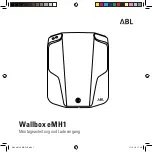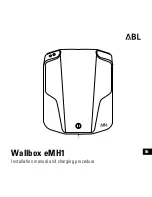
158
STARTING AND OPERATING
After Starting — Warming Up The Engine
Proceed as follows:
Travel slowly, letting the engine run at a
reduced RPM, without accelerating suddenly.
It is recommended to wait until the engine
coolant temperature gauge starts to rise for
maximum performance.
Stopping The Engine
To shut off the engine with vehicle speed
greater than 5 mph (8 km/h), you must push
and hold the ignition or push the START/STOP
button three times consecutively within a few
seconds. The engine will shut down, and the
ignition will be placed in the RUN position.
Turning off the car (cycle the ignition from the
RUN mode to the OFF mode), the power supply
to the accessories are maintained for a period
of three minutes.
NOTE:
If the vehicle fails to shut off using the ignition,
refer to “Instrument Cluster Display” in “Getting
To Know Your Instrument Panel” for further
information.
Opening the driver side door with the ignition in
RUN will sound a short chime that reminds the
driver to place the ignition to OFF.
When the ignition is in the OFF mode, the
window switches remain active for three
minutes. Opening a front door will cancel this
function.
After severe driving, idle the engine to allow the
temperature inside the engine compartment to
cool before shutting off the engine.
Turbocharger “Cool Down” — If Equipped
This vehicle is equipped with an after-run pump
to cool the turbocharger after the engine is shut
off. Depending on the type of driving and the
amount of cargo, the pump will run for up to
10 minutes after the engine has been shut off
to circulate coolant through the turbocharger.
Although the pump is rubber-mounted for quiet
operation, it is normal to hear it running during
this time.
ENGINE BREAK-IN RECOMMENDATIONS
A long break-in period is not required for the
engine and drivetrain (transmission and axle) in
your vehicle.
Drive moderately during the first 300 miles
(500 km). After the initial 60 miles (100 km),
speeds up to 50 or 55 mph (80 or 90 km/h) are
desirable.
While cruising, brief full-throttle acceleration
within the limits of local traffic laws contributes
to a good break-in. Wide-open throttle
acceleration in low gear can be detrimental and
should be avoided.
The engine oil installed in the engine at the
factory is a high-quality energy conserving type
lubricant. Oil changes should be consistent with
anticipated climate conditions under which
vehicle operations will occur. For the
recommended viscosity and quality grades,
refer to “Dealer Service” in “Servicing And
Maintenance”.
20_BV_OM_EN_USC_t.book Page 158
Summary of Contents for 2020 RENEGADE
Page 482: ......
















































